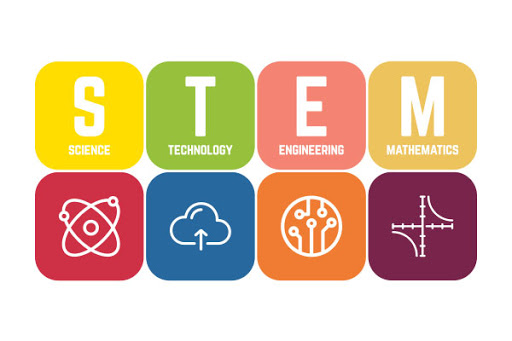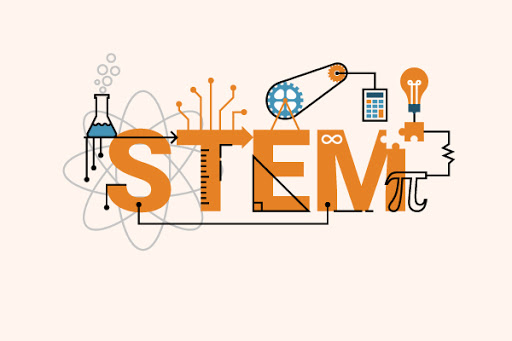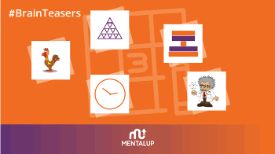WHAT IS STEM EDUCATION AND HOW TO EDUCATE CHILDREN THE RIGHT WAY?
- STM (Scientific, Technical, and Mathematics; or Science, Technology, and Medicine; or Scientific, Technical, and Medical)
- STEMIE (Science, Technology, Engineering, Mathematics, Invention and Entrepreneurship)
- STREM (Science, Technology, Robotics, Engineering, and Mathematics)
- GEMS (Girls in Engineering, Math, and Science)
- THAMES (Technology, Hands-On, Art, Mathematics, Engineering, Science)
STEM’s primary purpose is to educate children to approach these disciplines holistically as opposed to individually. STEM relies heavily on real-world applications of the above disciplines and learning through experimentation. And it prepares children for their future jobs.
STEM Learning In Today’s World
There are many variations of STEM today, with some even including arts and social sciences in the curriculum. However, the core foundation of STEM still revolves around science, technology, learning by trial and error, and being open to new methods of teaching. With the digitisation of the world, the growing importance of computer sciences, and the number of new jobs created by technology and industrialisation, STEM is becoming more mainstream than ever before.
Many nations have their STEM learning programs, schools embrace STEM in their education curriculum, and local council and community initiatives often hold STEM learning workshops for the public.
The Controversies Around STEM Education
“You cannot endow even the best machine with initiative; the jolliest steamroller will not plant flowers."
Walter Lippmann, Author

The opposition to heavy reliance on STEM education sometimes bases its claims to real-world success stories of entrepreneurs and industrialists such as Mark Zuckerberg, Henry Ford, Steve Jobs, Daniel Ek, Bill Gates, Richard Bronson and many more.
What’s the right approach to engage children in STEM education?
Today, most STEM educators use a holistic approach to teach students about the world. Students are no longer funnelled into siloed divisions of Science, Technology, Engineering or Mathematics. Instead, STEM educators encourage their student’s natural curiosity and create safe environments to ask questions, even about seemingly simple facts and concepts.
This is an approach that’s often endorsed by successful businessmen and tech entrepreneurs in their statements, speeches and interviews. The amount of data and information, even in a single field and discipline, has way surpassed the point where one person can learn it all. This means that the skill of asking the right questions – in order to find the correct data – has become more crucial than ever.
STEM Success Stories
“One machine can do the work of fifty ordinary men. No machine can do the work of one extraordinary man.”
Elbert Hubbard, Author
We’ve now given an overview of STEM education, its foundations, and it’s current state. It appears history is repeating itself because today, STEM education focuses on asking the right questions, instead of the rapid acquisition of knowledge.
When encouraging your child to acquire a STEM mentality, try to keep the following examples of famous scientists in mind. We don’t celebrate Isaac Newton because of his brilliant engineering or mathematical intelligence. He is celebrated because only he asked the question: “What makes the apple fall?”
Albert Einstein, one of the leading theoretical scientists in the modern world, was not a mathematical genius. In fact, he struggled for a long time to work through a mathematical problem that he created himself. When one of the most famous mathematicians of the world at that time decided to intervene and attempt to solve his equation, Einstein realised he had to take a step back to ask the right question. It was only then that Einstein developed the “General Theory of Relativity” and completely change the way humanity perceives the universe.
Throughout history, the key to finding answers is persistently asking the right questions.
What are the Benefits of a STEM Education for Children?
- Improves problem-solving skills
- Allows children to gain a practical understanding of concepts rather than memorising from a textbook
- Invokes creativity and innovative skills
- Encourages persistence and determination
- Allows children to develop resiliency when they encounter hurdles teaches them to fail and recover
- Develops outside-the-box and creative thinking with activities like imagination games
- Encourages social collaboration and teamwork

How to Prepare Your Child for STEM Education?
Show them how to access knowledge: Thanks to the internet, there are vast amounts of information easily accessible as long as you have a desktop, mobile device or tablet. Make sure to teach your children how to find reliable and verified sources of information on the internet.
Challenge them with questions: Instead of immediately answering your child’s questions every time, try turning the question on them. This will challenge their thinking and encourage them to find a solution for themselves.
Encourage them to ask questions: If you’re going to “force” your kids to do anything, it should be to ask more questions. No matter how silly the questions seem, don’t let them fear or hesitate to ask questions. Questions are the gateway to inventions and innovation.
Let them fail: Failure is a part of learning. Don’t focus on the failure but teach them how to focus on learning from their failures.
“Just because something doesn’t do what you planned it to do, doesn’t mean it’s useless.”
Thomas Edison, Inventor
Cook together: Cooking may not sound very scientific at first; however it’s the simplest and purest form of chemistry. And it’s edible! Even if you’re not a good cook, you can encourage your child to cook under your supervision.
Spend time in nature: Nature is the mother of all sciences and is a very good way to trigger the natural curiosity of children. Spending time in nature also helps children realise the vastness of the universe and nature.
Encourage them to read: A child or person without an ability to express their curiosity or questions will not be able to ask the right questions or make sense of the answers they find. Language is the pinnacle of human advancement and it’s first and foremost driving force. Reading, not only about science but about anything, will improve their linguistic capabilities and help them grasp new concepts and facts faster.
Get them involved with technology: Technology is a constantly changing tool that’s heavily involved in all of our lives. Let them embrace this fact and technology itself. Let them realise that technology is nothing to fear or obsess over, but only a tool to help us.
Let them play: Playing games is very important in the development of a child’s brain. You can also encourage them to play educational or thinking games that improve their intellectual thinking. Games developed by child education specialists and teachers, such as MentalUP, are a good option if you want to track your child’s performance over time.
How Can MentalUP Brain Games Develop Your Child’s Interest in STEM?
MentalUP brain and edutainment games were created by academics and child education specialists to specifically develop the intellectual capacity of children. While the games are designed to allow children to have fun and challenge their thinking, MentalUP’s brain games can also help in the following ways:
- Allow your child to become acquainted with the technology.
- Help your child learn problem-solving skills.
- Encourage your child to ask questions.
- Develop your child's curiosity.
- Constantly challenge your child with progressively difficult games.
- Teach your child that failure should be motivating and it’s more important to keep trying to succeed than give up on the first go!
MentalUP also has games that parents can play with alongside their children, so you can spend quality time with your family. You can try MentalUP now for free.






